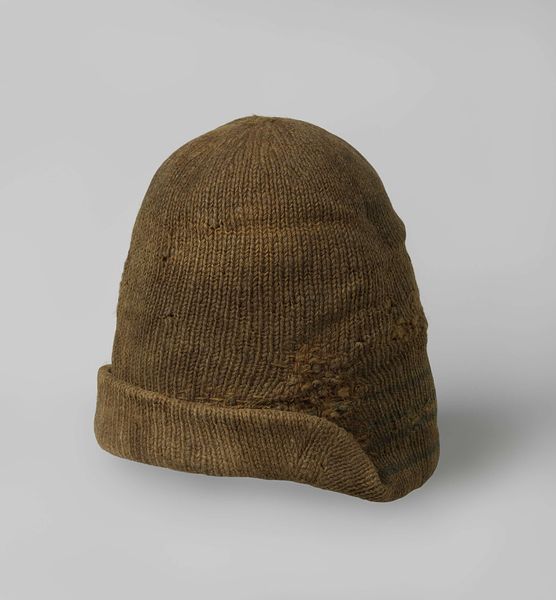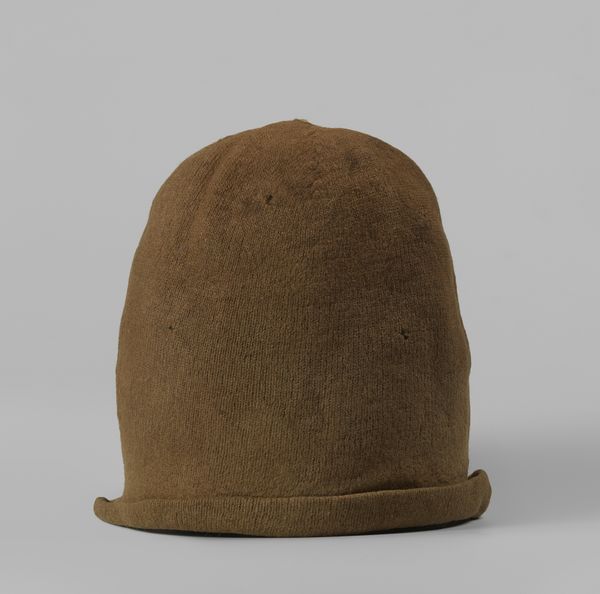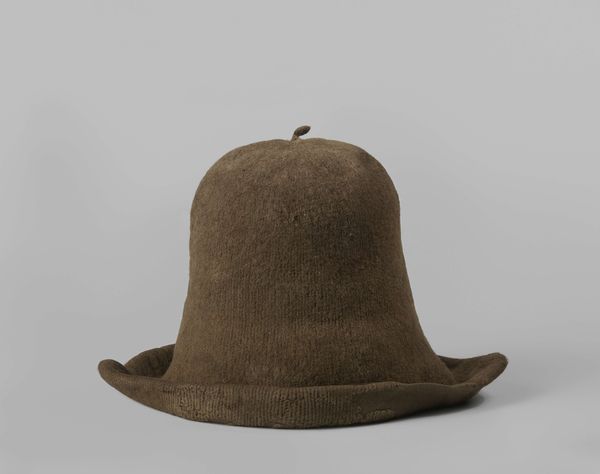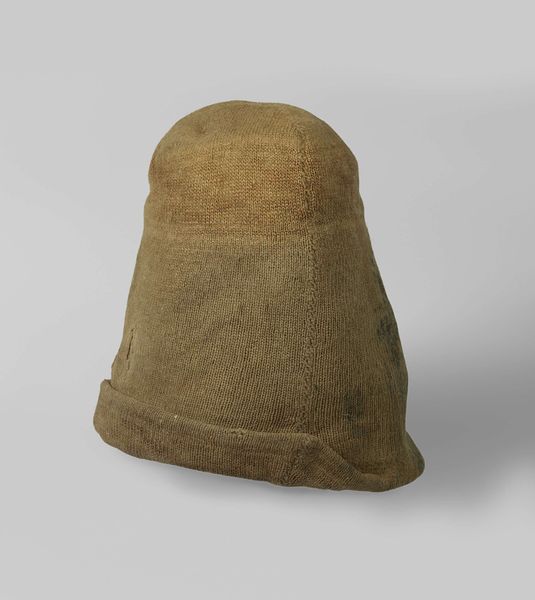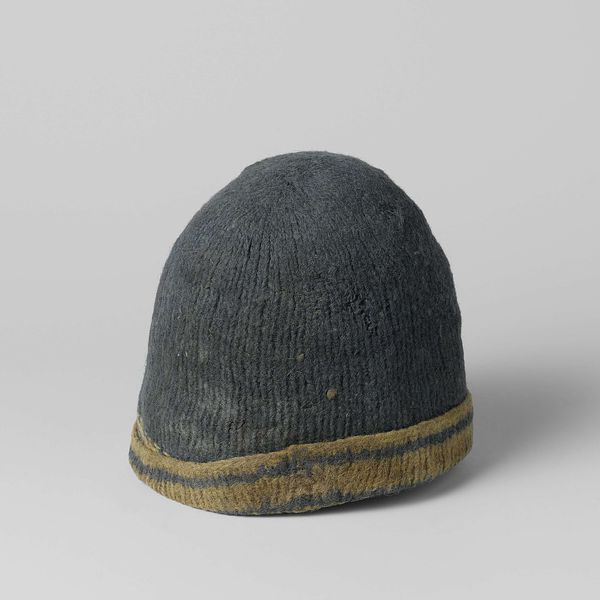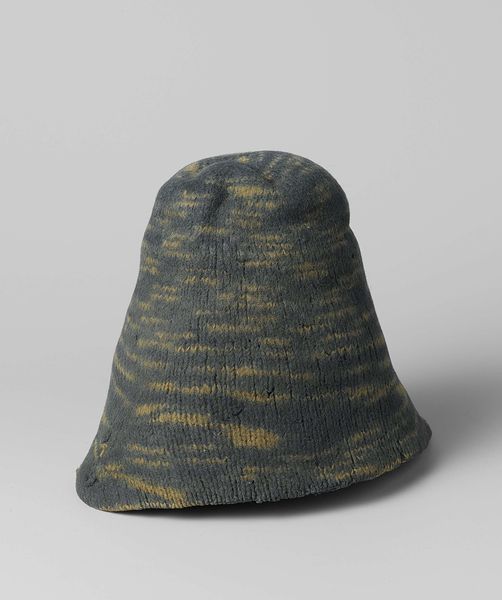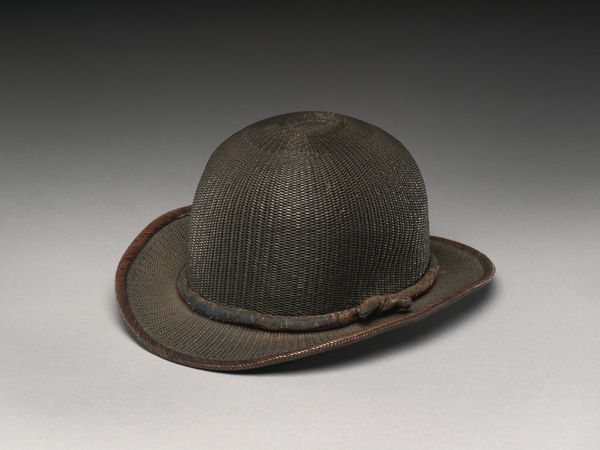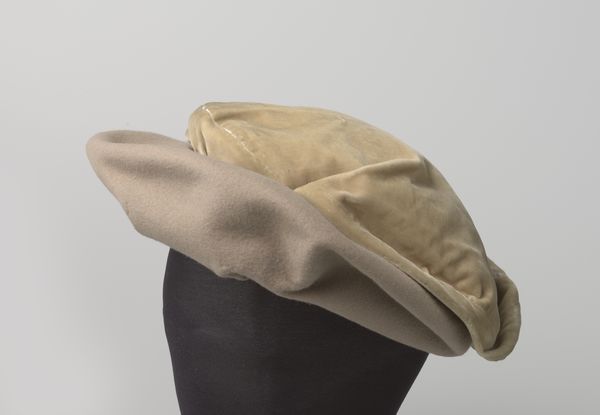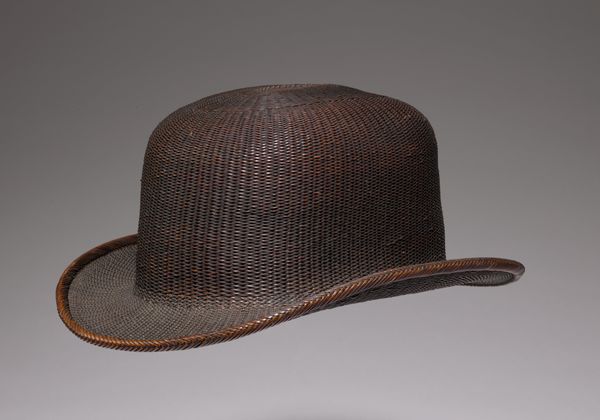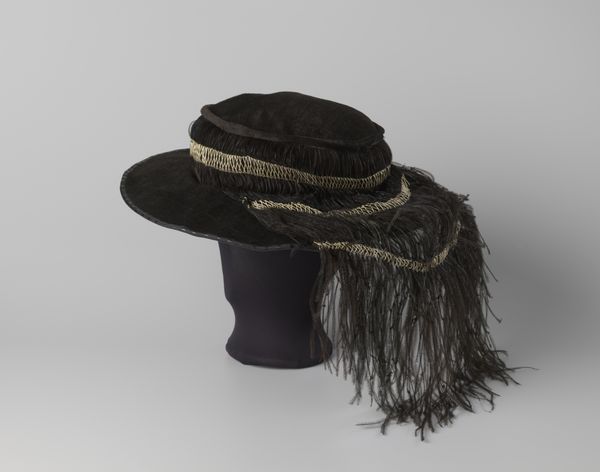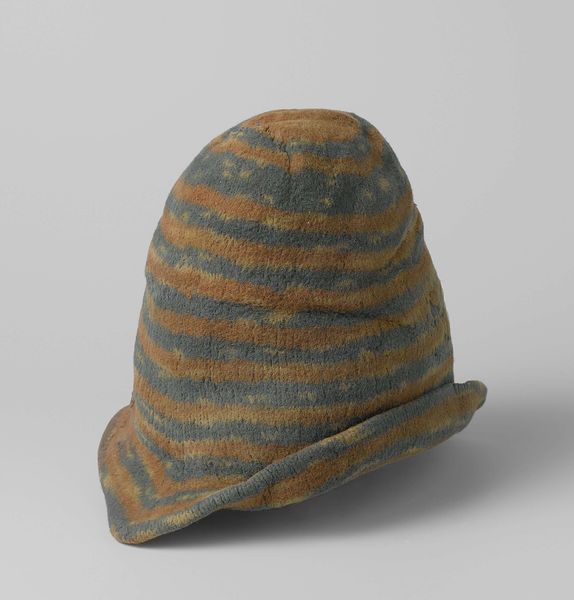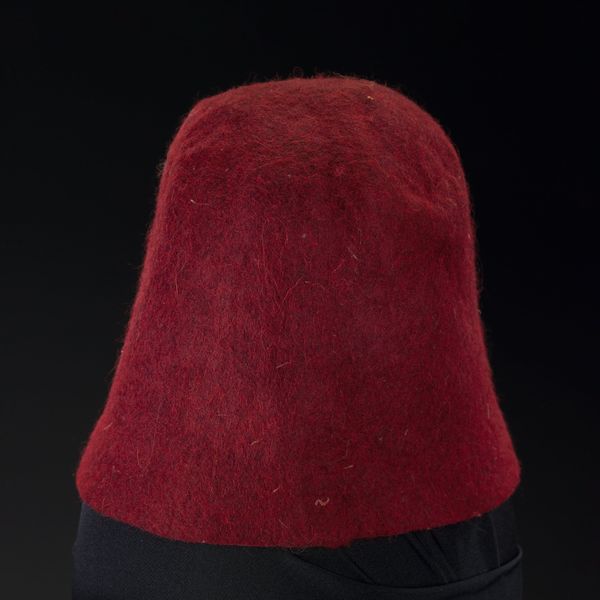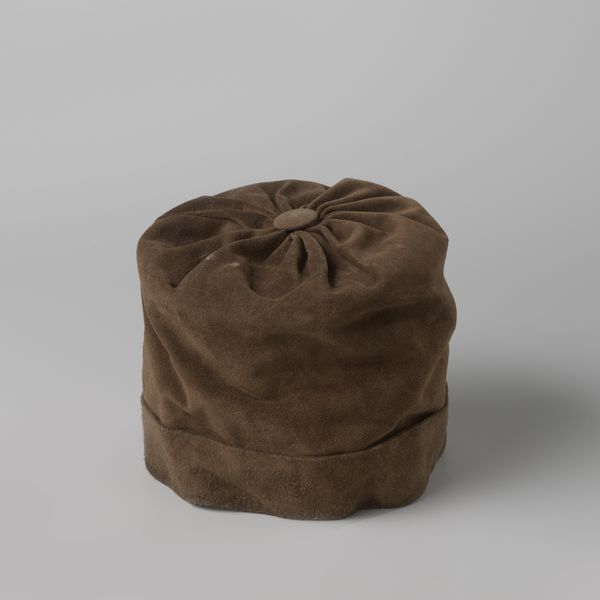
mixed-media, textile
#
mixed-media
#
dutch-golden-age
#
textile
#
folk-art
#
history-painting
Dimensions: circumference 66 cm, height 24 cm
Copyright: Rijks Museum: Open Domain
Curator: Imagine the salt spray, the endless horizon... we're looking at a woollen cap, likely crafted between 1650 and 1800, worn by Dutch whalers. Anonymous, a practical and deeply evocative object. Editor: The immediate sensation is warmth and also... constriction. It’s visually weighty. A testament to something both essential and… limited. How free could they really feel? Curator: Indeed! Whaling, though romanticized, involved immense hardship and brutal exploitation of both the whales and the laborers. This cap, almost pebble-like in its solidity, reminds us of that harsh reality. Each thread a connection to grueling work. I find that moving. Editor: Yes, I appreciate the materiality communicating labour's reality. Its dense construction hints at survival, the desperate need for warmth, the crude effectiveness of such an object against the biting cold. But it’s also representative of a capitalist system inextricably linked to ecological damage, violence and oppression. Curator: Well said. I feel an almost contradictory sense of awe and despair looking at it. Such ingenuity and utility born of dire circumstances. I keep thinking, what were they thinking? What songs did they sing? Editor: They sang work songs, most likely songs that maintained the spirit amidst a system intent on destroying the body and the environment. We can use this unassuming cap to think critically about who benefits from resource extraction and human toil, and who pays the price. Curator: That makes it all the more extraordinary really. Beyond being a relic of a specific trade it also exists as this powerful symbol of human endurance, but also the problematic intersection of trade, class, and environment. Editor: Exactly. And that's why looking at the past always needs to be framed with considerations about the present, too. Thank you. Curator: Thank you, fascinating perspective on this humble hat.
Comments
rijksmuseum about 2 years ago
⋮
In 1980 archaeologists investigated the graves of 185 Dutchmen – whale hunters, and workers at whale oil refineries – who had died on or near Spitsbergen in the 17th century. Many skeletons were still wearing their knitted woollen head coverings. These caps were highly personal. The men were bundled up against the severe cold and could only be recognized by the colours and patterns of their caps. Presumably this is the reason why the caps went with them into their graves.
Join the conversation
Join millions of artists and users on Artera today and experience the ultimate creative platform.
